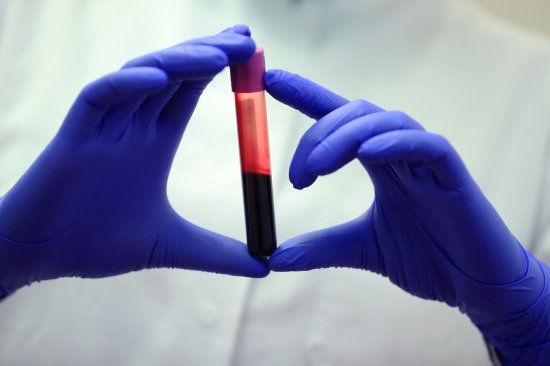
A study shows that a blood test can accurately detect Alzheimer’s disease.
As the world’s population ages, health experts are bracing for higher rates of age-related diseases, including Alzheimer’s.
Finding new ways to diagnose the condition is more of a priority than ever, since new treatments work best earlier in the course of disease. But currently, the two primary ways to diagnose Alzheimer’s—PET imaging or a lumbar puncture—are either too expensive or invasive for most people, leaving too many cases undiagnosed.
In a study published in JAMA Neurology, researchers report on a promising, more accessible test using blood, which could make more widespread screening and monitoring of the neurodegenerative condition possible. Researchers at the University of Gothenburg in Sweden worked with ALZPath, a company that developed a blood-based Alzheimer’s test used in research studies, to determine how well the test measured up to the current gold standards of PET imaging and cerebrospinal fluid (CSF) tests from lumbar punctures. The researchers analyzed scans or CSF and blood samples from nearly 800 people in three different patient populations in the U.S., Canada, and Spain.
[time-brightcove not-tgx=”true”]In the comparison, the blood test performed as well as CSF in detecting Alzheimer’s—an encouraging finding, since CSF performs as well as PET scans in diagnosing the condition.
More From TIME
“This test showed that blood and CSF performed exactly the same,” says Nicholas Ashton, associate professor of neurochemistry at the University of Gothenburg and lead author of the study. “The blood test performed excellently—it was almost 95% accurate—and in that regard, it could eventually replace CSF.”
The test measures a substance called phosphorylated tau, a protein that has emerged as a strong indicator of Alzheimer’s. Levels of phosphorylated tau tend to rise as clumps of amyloid protein, the hallmark of Alzheimer’s, begin to form in the brain, often years before symptoms of memory loss and cognitive decline occur. The blood-based test takes advantage of proprietary technology that makes it very sensitive to even low levels of the protein, which could make it a useful tool for screening for the disease.
Ashton says doctors in Sweden are beginning to incorporate the blood test into an overall program for diagnosing and managing Alzheimer’s. They are beginning to conduct a real-world study and collect blood samples to determine what proportion of patients, for example, could be reliably diagnosed from the blood test alone, and which might need additional confirmatory tests like CSF. “We hope that everyone who is suspected of having dementia could access this test, which reveals the underlying pathology of what might be causing their symptoms,” says Ashton.
If people do have Alzheimer’s, the blood test could also become a tool to identify patients who could benefit from the new anti-amyloid treatments, such as lecanemab, as well as help doctors monitor how well they are responding the medication. In order to qualify for the drug in the U.S., patients need to prove that they have amyloid in the brain, and a simple blood test could be a way to quickly identify those who might benefit. “Rather than wait for a CSF test or PET scan, everyone [who is suspected of having dementia] could at least get a blood exam to see if they are eligible for the drug or now,” says Ashton.
For now, the ALZPath test is available only for scientists to purchase for research studies through select partner labs. But later this month, doctors in the U.S. will be able to order the test for use with patients. (Some laboratory-developed tests performed by certain certified labs don’t require clearance from the U.S. Food and Drug Administration.) Andreas Jeromin, chief scientific officer of ALZPath, expects that in the next two to three years, large hospital and regional labs could start performing the test themselves as demand increases.